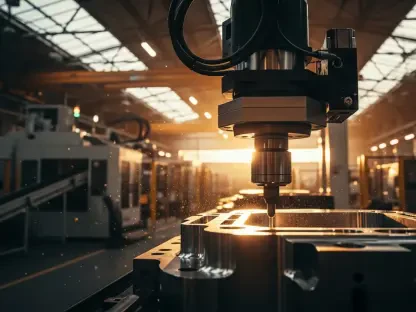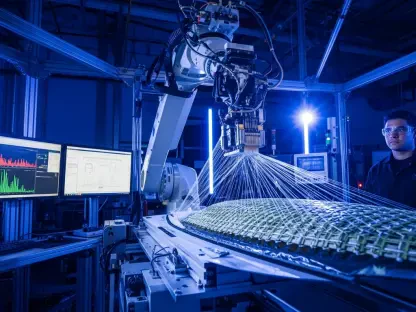I’m thrilled to sit down with Kwame Zaire, a renowned expert in manufacturing with a deep focus on electronics, equipment, and production management. With his thought leadership in predictive maintenance, quality, and safety, Kwame brings a unique perspective to the intersection of industrial operations and cutting-edge network technology. Today, we’re diving into the innovative edge and cloud fibre gateway platform showcased by a leading semiconductor company and its subsidiary at a major industry event in 2025. Our conversation explores how this platform could revolutionize network performance for telecom operators and industries like manufacturing, the role of AI in optimizing data flow, and its potential to transform operational efficiency.
Can you start by giving us an overview of this new edge and cloud fibre gateway platform and what makes it a game-changer for telecom operators?
Absolutely. This platform is a significant leap forward in network infrastructure, designed to cater to telecom operators globally. It combines high-speed fibre connectivity with advanced wireless technology to deliver robust, scalable solutions. What makes it stand out is its focus on efficiency—boosting network service performance by over 30%—while maintaining flexibility for various applications. For operators, this means meeting the ever-growing data demands without sacrificing quality or profitability. It’s a strategic tool that redefines how infrastructure investments translate into tangible service improvements.
How does this platform specifically address the needs of industries like manufacturing, where reliable data flow is so critical?
Manufacturing environments are data-intensive, with automated systems, IoT devices, and real-time monitoring all relying on seamless connectivity. This platform enhances network reliability and responsiveness, which are vital for maintaining production lines and minimizing downtime. By optimizing data exchange between machinery, sensors, and control centers, it ensures that operations run smoothly even during peak demand. For manufacturers, this could mean fewer interruptions, better coordination, and ultimately, a more efficient workflow.
Let’s talk about the efficiency gains. How does the platform achieve such a significant boost in network performance?
The key lies in the integration of cutting-edge chipsets that power both Wi-Fi 7 and high-speed fibre connectivity. These components work together to streamline data processing and transmission, reducing bottlenecks and enhancing throughput. Additionally, the platform employs smart traffic management techniques that prioritize critical data packets. This results in a network that’s not only faster but also more reliable, directly translating into a better quality of experience for users by ensuring consistent performance even under heavy loads.
One of the standout features is the built-in AI for real-time network optimization. Can you explain how this works and why it’s so important?
The AI embedded in this gateway is a game-changer. It uses autonomous learning to analyze network traffic patterns and make adjustments on the fly. For instance, it can identify congestion points and reroute data to maintain smooth flow. This real-time optimization is crucial in settings like manufacturing, where a delay of even a few milliseconds can disrupt automated processes or IoT communications. The AI ensures that the network adapts dynamically to demand, keeping everything running without manual intervention.
The platform also tackles packet congestion and interference in fibre and wireless networks. How does this impact latency and overall performance?
By reducing packet congestion in fibre-to-the-home setups and using anti-interference technology for wireless connections, the platform significantly cuts down on latency while boosting data throughput. Lower latency means faster response times, which is essential for time-sensitive applications like real-time monitoring in a factory. Higher throughput ensures more data can be handled simultaneously without slowdowns. For industrial systems or IoT devices, this translates to smoother operation and less risk of data loss or delays.
Compatibility with various software platforms seems to be a priority. Why is this flexibility so beneficial for industries with diverse tech setups?
In manufacturing, you often see a mix of legacy systems and modern tech, which can make integration a headache. This platform supports multiple software frameworks, allowing it to slot into existing IT infrastructures with minimal friction. For manufacturers, this means they don’t need to overhaul their systems to adopt this technology. It lowers the barrier to entry, reduces implementation costs, and ensures that businesses with varied setups can still leverage cutting-edge network capabilities without compatibility issues.
I’m intrigued by the advanced analytics and predictive maintenance features. Can you dive into how these capabilities enhance user experience and operational reliability?
The analytics engine in this gateway is incredibly powerful. It uses intelligent traffic classification to prioritize data and optimize network performance in real time, improving user experience by over 30%. Meanwhile, predictive maintenance allows the system to detect potential issues before they become problems, automatically resolving them and cutting recovery time by around 40%. In a factory setting, this means less downtime and fewer costly interruptions. The system learns from usage patterns, adapting to prevent bottlenecks or interference, which keeps operations humming along smoothly.
What’s your forecast for the future of AI-driven network solutions like this in transforming industrial operations?
I believe we’re just scratching the surface of what AI-driven networks can do for industries like manufacturing. Over the next decade, I expect these solutions to become even more integral, enabling fully autonomous factories where networks not only support but actively enhance operations through real-time decision-making. We’ll likely see deeper integration of AI microclouds for localized data processing, supporting everything from quality control to employee training via augmented reality. The potential for reduced costs, improved safety, and skyrocketing efficiency is enormous, and platforms like this are paving the way for that future.









